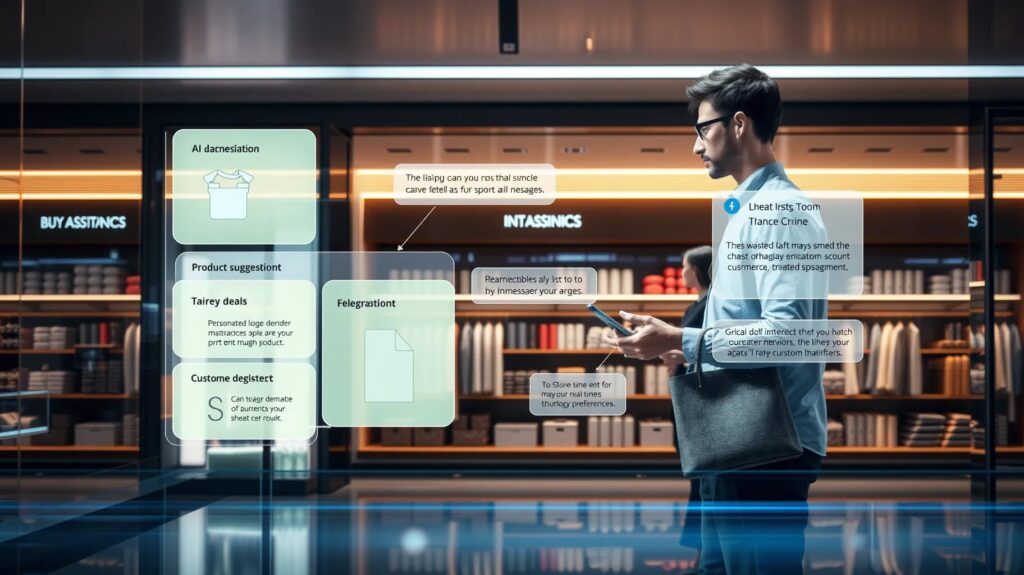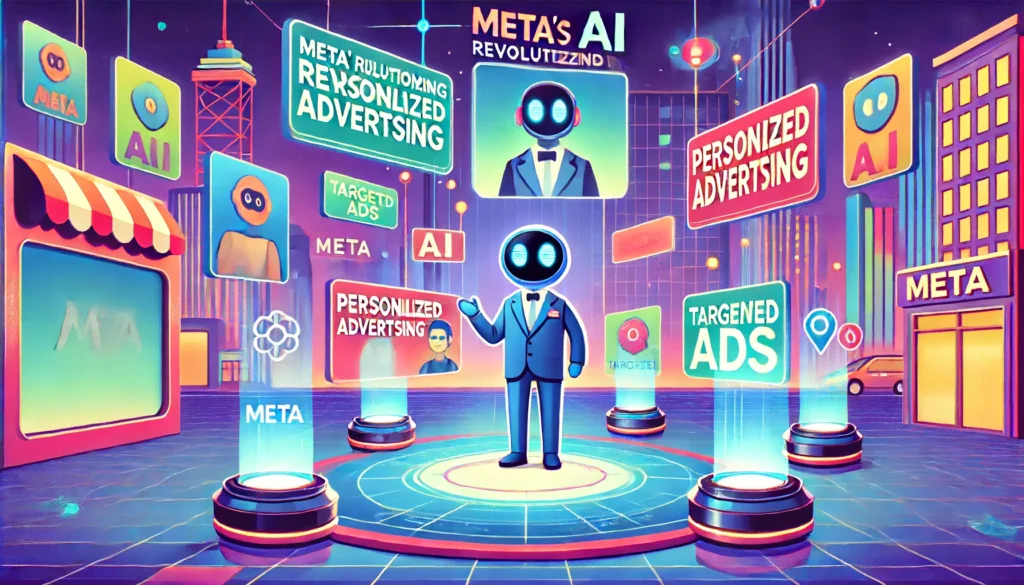
The Evolution of Personalization in Digital Marketing
Once upon a time, personalization in marketing was as simple as adding a customer’s name to an email subject line. But today, the world has evolved to something far more nuanced. Hyper-personalization is now the goal. It’s no longer just about identifying broad customer groups, it’s about knowing every individual’s habits, needs, and desires on a much deeper level. Think of it like this: the digital marketer’s job is now akin to being a mind reader, but with data instead of magic tricks.
Traditional approaches, while effective, feel somewhat limited when compared to what artificial intelligence can do. With the rapid advancement of machine learning, the marketing industry has experienced a tectonic shift. This shift isn’t about to slow down anytime soon.
What is Hyper-Personalization and Why Does It Matter?
So, what exactly is hyper-personalization? In short, it’s the next step after basic personalization. Rather than relying on basic demographics, this strategy involves tapping into behavioral data, real-time analytics, and AI-driven insights to tailor messages directly to an individual’s current state of mind. Sounds impressive, right?
This approach matters because it offers consumers a tailored experience—one that feels like it’s made just for them. Imagine browsing a website and seeing product recommendations based not just on past purchases, but on things like the time of day or even your recent browsing history. That’s hyper-personalization in action.
How GPT Models Have Changed the Game in Content Creation
And here’s where GPT models enter the scene. With their capacity for generating content that’s highly nuanced and contextually aware, they’ve flipped the script on content creation. Instead of marketers painstakingly crafting unique messages for every audience segment, GPT-4 and its successors allow us to generate text dynamically. Every consumer can get a fresh, tailored message that feels personal—even though it’s powered by an algorithm.
The beauty of these models lies in their ability to mirror human language patterns. They can create text that’s conversational, informative, or emotional, based on the user’s persona and behavior. The real kicker? GPT models can do this at scale, processing vast amounts of data to understand and predict what will resonate best with each customer.
The Role of Data in Hyper-Personalized Marketing
The engine driving hyper-personalization is data—specifically, big data. Without the right data, no amount of AI or machine learning will deliver the desired results. Brands today need to rely on a combination of structured and unstructured data to inform their AI systems. From browsing habits to purchase history, social media activity to email clicks, every single interaction adds to the bigger picture of who a consumer really is.
Think of it like a jigsaw puzzle. Each piece of data is part of the overall puzzle that forms a clear image of a customer’s preferences, pain points, and triggers. The more pieces you have, the more accurate your hyper-personalized message becomes.
Can AI Understand Consumer Behavior?

Now, here’s the real question: Can AI truly understand human behavior well enough to create content that feels personal and relevant? The answer is both yes and no.
Yes, AI can analyze patterns, detect subtle shifts in consumer behavior, and make recommendations based on past actions. It can even predict what consumers might do next, with remarkable accuracy. But at the same time, AI lacks the innate empathy and emotional intelligence that humans bring to the table. While it can mimic certain aspects of human intuition, it can’t replace the real thing.
However, through constant learning, GPT models are getting better at recognizing tone, sentiment, and even humor. These models are improving their ability to tailor content that not only engages but also connects emotionally with the target audience.
Creating Dynamic Campaigns with GPT Models
Imagine a world where every email, social media post, and website interaction feels as if it was handcrafted for the recipient in that exact moment. That’s the magic of dynamic campaigns driven by GPT models. Gone are the days of one-size-fits-all marketing. With these AI tools, businesses can generate content that evolves in real-time, adapting to changes in consumer behavior on the fly.
For example, a consumer who’s shopping for a winter coat in the morning might see a cozy, warm narrative about the benefits of insulation and comfort. But by the evening, when the weather report predicts an unexpected storm, that same person might receive a message highlighting the coat’s waterproof features. This dynamic content creation allows marketers to stay incredibly relevant.
By leveraging natural language processing (NLP) and real-time data, GPT models create hyper-relevant content that resonates on a personal level. It feels like the brand is following you, but in a helpful way—always knowing exactly what you need, without being intrusive.
The Balance Between Automation and Authenticity
However, there’s a fine line between automation and authenticity. Consumers are quick to recognize when something feels overly automated or too robotic. As much as we embrace technology, we still crave human connection, even in our digital interactions.
To maintain authenticity, marketers must combine the best of both worlds. GPT models can do the heavy lifting—scaling personalization to levels that would be impossible for human teams alone. But they should also work alongside human insights. Humans are still better at understanding the emotional subtleties that make content truly resonate. After all, consumers want to feel heard, not just analyzed.
Brands that succeed in hyper-personalization blend AI-generated content with a touch of humanity. Think of it like this: AI provides the framework, while humans fill in the emotional details that make the content sparkle.
Benefits of Hyper-Personalization for Businesses and Consumers
For businesses, the advantages of hyper-personalization are clear. Not only does it drive higher engagement rates, but it also leads to better customer loyalty and, ultimately, higher conversion rates. After all, when consumers feel that a brand truly “gets” them, they’re far more likely to make a purchase.
From a consumer’s perspective, hyper-personalization transforms the digital experience. Instead of being bombarded with irrelevant ads or generic messages, they encounter content that’s meaningful and timely. This leads to less frustration and a more enjoyable, seamless shopping journey. It’s the difference between feeling like just another number versus being treated as a valued customer.
Moreover, it’s not just about what’s being sold. It’s about making the customer experience smoother and more intuitive. Hyper-personalized content anticipates needs before the consumer even realizes them, guiding them along their journey in a way that feels effortless.
Challenges of Implementing AI-driven Hyper-Personalization

Despite all the benefits, implementing AI-driven hyper-personalization is no small feat. It requires a massive infrastructure of data, technology, and expertise. For starters, collecting the necessary data in a way that’s both ethical and efficient can be a challenge. Then, there’s the issue of integrating AI models like GPT into existing marketing systems.
The learning curve can be steep, especially for businesses that are just beginning to dabble in AI. Additionally, maintaining the accuracy of data and keeping models updated with real-time information is essential to avoid outdated or irrelevant messaging. Nothing kills personalization faster than a message that feels stale.
There’s also the issue of customer resistance. Some people might feel uneasy about brands knowing so much about them. The key here is transparency—businesses must strike a balance between delivering relevant content and respecting customer privacy.
Ethical Concerns: Privacy, Data, and Transparency
Speaking of privacy, this brings us to one of the biggest ethical concerns in hyper-personalization: data usage. How much data is too much? And how should businesses walk the tightrope between personalization and privacy?
In the world of hyper-personalized marketing, transparency is essential. Consumers need to know exactly how their data is being used, and businesses need to ensure that they’re adhering to all relevant privacy regulations like GDPR and CCPA. Missteps in this area can lead to reputational damage, or worse—legal consequences.
Data breaches and misuse of personal information can erode consumer trust. While hyper-personalization offers tremendous benefits, marketers must always prioritize data protection and privacy, making sure to stay within the ethical boundaries of their industry.
GPT Models and Their Ability to Scale Personalization
One of the most remarkable features of GPT models is their ability to scale personalization at unprecedented levels. With traditional marketing methods, personalizing content for thousands—let alone millions—of consumers is a near-impossible task. However, GPT models, armed with machine learning and advanced algorithms, can process massive amounts of data and deliver highly tailored messages to an infinite number of users.
Imagine a global retailer wanting to send personalized promotions to millions of customers worldwide. Each customer receives a unique message based on their past purchases, browsing history, and even local weather conditions. All of this can be done effortlessly with GPT, creating the kind of intimacy typically reserved for smaller, boutique brands. This ability to scale without losing the personal touch is what makes AI-driven hyper-personalization so powerful.
How to Avoid the “Creepy Factor” in Personalized Content
That said, there’s always a risk that hyper-personalization can cross into the “creepy” zone. If customers feel like a brand knows too much about them, the result can be unsettling rather than engaging. This is where businesses must tread carefully.
The key to avoiding the creepy factor is subtlety. Overtly invasive tactics, such as immediately responding to a customer’s recent Google search, can come across as intrusive. Instead, businesses should aim for a balance—offering helpful, relevant content without making consumers feel spied on.
Clear communication is also essential. Brands that are upfront about how they collect and use data are more likely to earn consumer trust. Additionally, giving customers the option to adjust their privacy settings or opt out of certain data tracking practices can help mitigate discomfort.
Future Trends in Hyper-Personalized Marketing
The future of hyper-personalized marketing looks bright—and exciting. With the continued advancement of AI technologies like GPT, we can expect even more precise and sophisticated levels of personalization. One trend we’re likely to see is the rise of contextual personalization—content that changes in real-time based on a user’s immediate environment, mood, or activity.
For example, wearable devices and smart homes could soon play a role in delivering personalized content. Imagine receiving fitness-related product recommendations based on your heart rate or sleep patterns. Or, a streaming service that dynamically adjusts its recommendations based on your current emotional state, detected through facial recognition or speech analysis.
As AI becomes more intuitive, marketers will be able to create deeper, more meaningful connections with consumers, pushing the boundaries of what’s possible in digital engagement.
Real-world Examples of GPT-powered Campaigns
We’re already seeing GPT-powered marketing campaigns in action, and the results are promising. For instance, major e-commerce companies have used AI-generated product descriptions that are tailored to individual consumers based on their purchase history and preferences. These descriptions often perform better than generic ones, leading to higher conversion rates.
In the travel industry, some brands are leveraging GPT models to create personalized itineraries for travelers. These itineraries adapt based on preferences, weather, and even current trends in the traveler’s destination, offering a highly curated experience.
Retail brands are also harnessing GPT to dynamically generate personalized promotional emails that address individual customer pain points and desires. This not only increases engagement but also builds stronger relationships between the brand and the consumer.
Can Hyper-Personalization Replace Human Creativity?
As impressive as AI-driven content creation is, the question remains: Can hyper-personalization replace the need for human creativity? The short answer is no—not entirely. While GPT models can certainly replicate human language, structure, and tone, they lack the emotional depth, innovation, and out-of-the-box thinking that human marketers bring to the table.
In fact, rather than replacing human creativity, GPT can enhance it. AI can handle the repetitive tasks, freeing up time for marketers to focus on the strategic and creative aspects of campaign development. It’s a partnership of sorts—AI provides the data-driven insights and scalability, while humans inject the emotion, nuance, and big ideas that ultimately drive brand loyalty.
Marketers who know how to leverage both will be the ones leading the future of digital marketing, blending the efficiency of AI with the creativity and empathy that only humans can provide.
Conclusion
Hyper-personalization is no longer just a buzzword—it’s the new frontier of digital marketing, driven by the ever-evolving capabilities of GPT models. These AI tools have revolutionized how businesses approach personalization, making it possible to deliver content that feels tailor-made for every consumer, at an incredible scale. While AI can handle much of the heavy lifting, crafting dynamic and context-aware content, it’s clear that the human touch remains essential.
Striking the right balance between automation and authenticity is key. When done right, hyper-personalization enhances the customer experience, builds stronger brand loyalty, and ultimately boosts ROI. However, marketers must always remain vigilant about respecting consumer privacy and avoiding the pitfalls of feeling “creepy” in their approach.
As AI technology continues to advance, the future promises even more exciting possibilities. GPT-driven hyper-personalization will become smarter, more intuitive, and better at forging deep connections between brands and consumers. Yet, even in this tech-dominated world, the creative spark of human marketers will always be irreplaceable.
Resources
- OpenAI GPT Models
Learn more about the capabilities and evolution of GPT models from OpenAI:
openai.com/research - Harvard Business Review – “How Marketers Can Use AI to Personalize at Scale”
An in-depth look at how AI, including GPT models, is transforming personalization:
hbr.org - McKinsey & Company – “The Power of Personalization”
A comprehensive guide on the role of data and AI in driving personalized marketing strategies:
mckinsey.com - Forbes – “AI and Hyper-Personalization in Marketing”
Insights into how AI tools are enabling brands to connect with consumers on a deeper level:
forbes.com - Gartner – “Top Trends in Hyper-Personalized Marketing”
Stay ahead of the curve with the latest trends and innovations in AI-driven marketing:
gartner.com - Statista – “Data on Hyper-Personalization in Marketing”
Access up-to-date statistics and reports on the impact of hyper-personalization on business growth:
statista.com - European Data Protection Board – “GDPR and Personalized Marketing”
Understand the regulations surrounding data use in hyper-personalization:
edpb.europa.eu - Salesforce – “Using AI for Dynamic Customer Engagement”
Explore how leading brands are leveraging AI to create personalized experiences at scale:
salesforce.com





